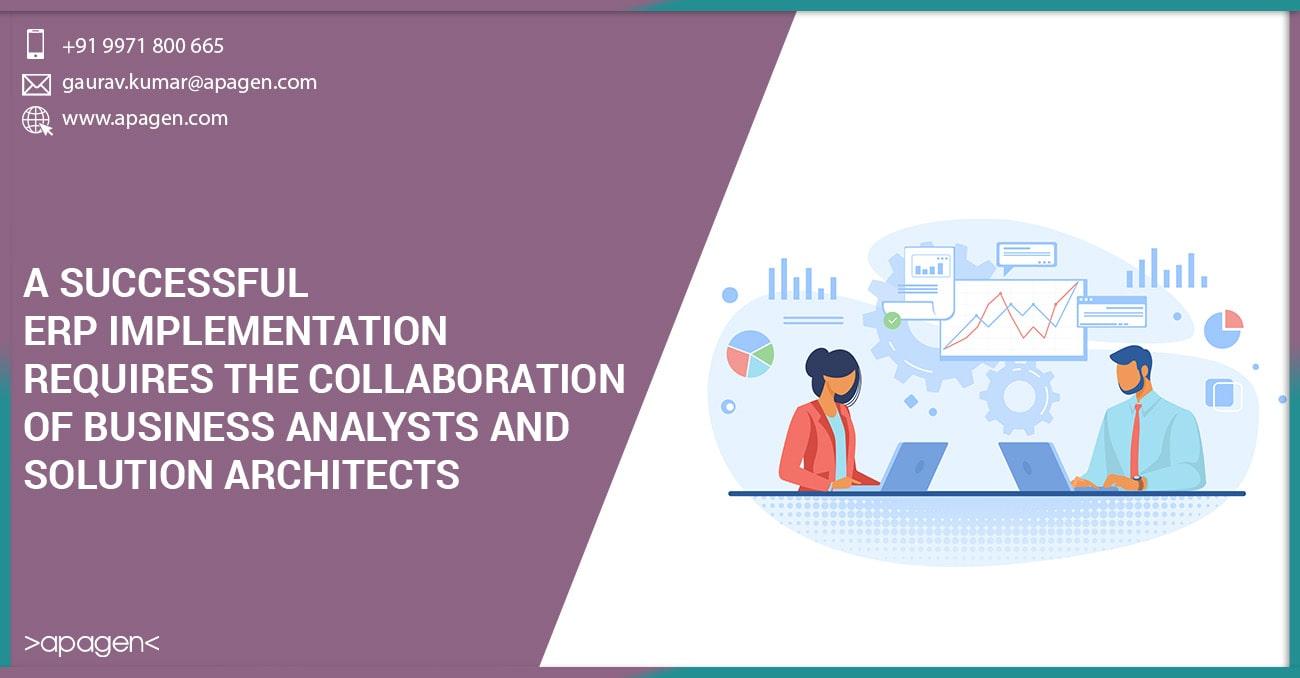
A Successful ERP Implementation Requires the Collaboration of Odoo Business Analysts and Odoo Solution Architect
Deciding to invest in an ERP isn’t always a straightforward decision. While eventually the purchase of the software will assist improve productivity, eliminate redundancies, and enhance your company’s capability to develop, knowing what to expect in an ERP implementation can help you understand these enterprise advantages quicker. Understanding the different roles involved in an ERP implementation project can help you maximize the worth of your ERP and ensure a successful implementation.
Business Analyst
To maximize the enterprise worth of your ERP implementation it’s crucial to have both business analysts and solution architects working collectively to ensure all stakeholder needs are accurately defined and delivered. The roles of the Odoo business analyst and Odoo solution architect have changed over the years, as has their importance to a successful ERP implementation.
The best definitions for both business analysis and the role of a Odoo business analyst come from the International Institute of Business Analysis (IIBA). The IIBA describes business analysis as “the practice of enabling change in an organizational context, by defining needs and recommending solutions that deliver value to stakeholders.” Therefore, it’s the role of the Odoo business analyst to enact change to improve business practices. During an Odoo ERP implementation, the business analyst works immediately with the venture stakeholders to define enterprise needs needed to maximize the enterprise worth of the ERP solution. This could include many people within your organization, from the IT supervisor to the CEO.
Solution Architect
Where the business analyst works with the project stakeholders, the Odoo solution architect works directly with the Odoo Business Analyst to determine and create a solution that meets the enterprise requirements of the stakeholders as agreed upon and documented by the business analyst. The solution architect integrates multiple systems or business modifications to reach at a cohesive functional solution that meets the needs of the stakeholders. To do so, the solution architect reviews the enterprise, stakeholder, and solution requirements prepared by the business analyst. He/she may also incorporate all documented enterprise and technical constraints recognized by the business analyst, project manager, and other team members.
Considering all this information, the solution architect will suggest a combination of ERP software and enterprise process modifications that may fill the enterprise gap and provide a solution that delivers the documented future state of the organization.
How It All Comes Together
The business analyst and solution architect work closely collectively throughout the project. First, the business analyst works to determine, refine, and carry the stakeholders to agreement on requirements. The Odoo business analyst then presents and communicates the needs to the Odoo solution architect. Next, the solution architect — working with the enterprise analyst — identifies and crafts a solution(s) that meets the client’s needs. The business analyst will then recommend the solution to the stakeholders and document how the solution meets the business need and directly traces back to the needs.
While the business analyst and solution architect roles are significantly totally different within the tasks they perform, they both have primarily the same objective in the long run: to maximise the enterprise value to the client by delivering a future state to the group that meets the wants of all of the stakeholders.

No Comments